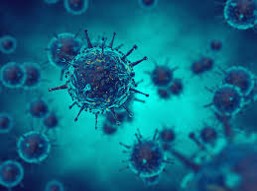
Hospital Acquired Infectious Diseases
“Nosocomial” term is used for any disease acquired by patient under medical care [1]. It is an infection acquired by patient during hospital stay. Recently, a new term, “healthcare associated infections” is used for the type of infections caused by prolonged hospital stay and it accounts for a major risk factor for serious health issues leading to death [2]. About 75% of the burden of these infections is present in developing countries [3]. Asymptomatic patients may be considered infected if these pathogens are found in the body fluids or at a sterile body site, such as blood or cerebrospinal fluid [4]. Infections that are acquired by hospital staff, visitors or other healthcare personnel may also be considered as nosocomial [5].
The situations in which infections are not believed as nosocomial are: (1) The infections that were present at the time of admission and become complicated, nevertheless pathogens or symptoms change resulting to a new infection; (2) The infections that are acquired trans-placentally due to some diseases like toxoplasmosis, rubella, syphilis or cytomegalovirus and appear 48 h after birth [6].
Hospital-acquired infections appeared before the origination of hospitals and became a health problem during the miraculous antibiotic era. Due to these infections, not only the costs but also the use of antibiotics increased with an extended hospitalization. This resulted in elevated morbidity and mortality. Studies conducted in different parts of the world show that in North America and Europe 5%–10% of all hospitalizations result in nosocomial infections, while Latin America, Sub-Saharan Africa and Asia show more than 40% hospitalizations with nosocomial infections [7].
Nosocomial infections can be caused by any organisms but few organisms are particularly responsible for hospital-acquired infections. In this review article, a brief overview on different aspects of nosocomial infections, particularly sites of infections, common nosocomial bacterial agents, selected antibiotic-resistant pathogens along with their modes of transmission and control measures will be discussed.
Curriculum
- 12 Sections
- 12 Lessons
- 40 Minutes
- Introduction1
- Types of Nosocomial Infection Continue1
- Commonly isolated nosocomial pathogens found in health care facilities1
- Hospital Acquired Infectious Diseases1
- Development of infection control programs1
- Surveillance of nosocomial infections1
- Summary1
- References1
- Objectives1
- Introduction1
- types1
- contol1










